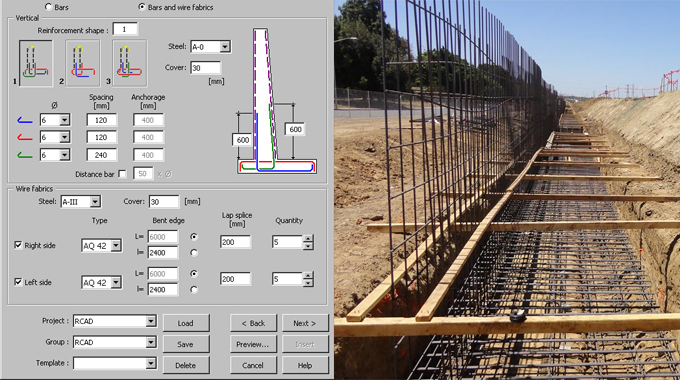Our Construction Company Austin Ideas
Table of ContentsRumored Buzz on Ace Construction Company TexasThe Construction Company Austin StatementsThe 9-Second Trick For Ace Construction Company AustinSome Known Details About Austin Construction Company
Considering that these products can not withstand considerable stress, the style intends at avoiding tension in the wall. Some gravity walls do not use mortar, relying entirely on their weight to stay in place, as in the case of dry stone walls. These walls usually are trapezoidal in area as revealed in Fig.2. Gravity walls require heavy foundation due to the plus size of the wall. They are affordable and suitable for only small heights (austin construction company). A gravity retaining wall offered with a percentage of reinforcement for lowering the mass of the concrete is called semi-gravity keeping wall, as displayed in Fig.
3. The lateral earth pressure is primarily resisted by the mass of the wall, as when it comes to a gravity retaining wall. These are the reinforced concrete walls in which lateral earth pressure is withstood by structural action of its members. The base of the wall is extended into the backfill on the heel side and is called heel piece, as shown in Fig.
4. The backfill over the heel piece supplies substantial additional lateral stability to the wall. The back of the wall on the heel side is also given a slope. This increases the width of the wall with depth, comparable to the increase in lateral earth pressure with depth. The vertical wall (referred to as stem), the heel slab, and the toe slab serve as cantilevers fixed at their junction and spanning to the other end.
Not known Incorrect Statements About Construction Company Austin

The heel slab and the toe piece go through resultant upward soil pressure from the bottom and bend up. Reinforcement is for that reason offered on the tension side, that is, vertically on the behind of the stem and horizontally at the bottom of the heel slab and the toe piece.
Cantilever retaining walls appropriate for maintaining the backfill to moderate heights of 4-7 m. In sample, the majority of cantilevered walls look like "L" s or inverted "T" s. Where foundation soils are poor, earth tieback retaining walls are another choice. These walls are counterbalanced not only by a large base but also by a series of horizontal bars or strips extending out from the vertical surface into the backfill.
When an earth tieback maintaining wall is backfilled, the weight and friction of the fill versus the horizontal members anchors the structure. When the height of a cantilever keeping wall is more than about 7 m, it is economical to provide a vertical bracing system, referred to as counterforts, on the backfill side above the heel piece.
16. 5. The stem and the heel slab act as continuous pieces covering horizontally along the length of the wall between the counterforts. Using counterforts reduces the flexing moment due to earth pressure and hence the size and support of the stem and the heel piece. Counterforts go through tension due to the action of lateral earth pressure of the backfill on the stem.
The Definitive Guide for Ace Construction Company
Figure 16. 6 reveals a buttressed maintaining wall. The structural action of the stem is the very same as in a counterfort keeping wall. However, the heel piece functions as a cantilever slab as in a cantilever maintaining wall. The toe slab acts as a constant piece spanning along the length of the wall in between the buttresses.
ADS: Sheet piles are versatile retaining structures utilized to provide a temporary building and construction location for building of structures. Sheet piles are made of timber, steel, or sometimes strengthened concrete. Lumber sheet piles were used in the past however their reuse is restricted for momentary structures up to shallow depth. For all essential structures and for depth > 3 m, steel sheet stacks are more frequently used.
Reinforced cement concrete (RCC) sheet piles might be often utilized in fine sand or soft clays. RCC piles may get damaged or broken under visit this site driving stresses in stiff soils. Sheet piles are set up by very first driving the steel or timber sheets into the soil. The soil on the front side is then dredged (eliminated) out.


The 3-Minute Rule for Ace Construction Company Austin
For this reason, the depth of foundation (embedment) is big compared with that in a keeping wall. The thickness of sheet piles is really little compared to the depth and length of a wall. For this reason, the weight of a sheet stack is really small and is generally ignored in the style. ADS: The soil on the back of the sheet stack is generally gotten rid of and backfilled with a cohesionless soil. Ace Construction Company.
However, the soil listed below the dredge level might be either a cohesionless soil or a cohesive soil, depending on the soil profile at the website of building - construction company austin. Sheet stacks having water on the front side utilized in dock and harbor structures to facilitate berthing of vessels (ships) are referred to as bulk heads.
Standard areas of steel sheet piles as suggested by United States Steel (1984) are displayed in Table 16. 3. i. Cantilever sheet stack. ii. Anchored sheet pile. The cantilever sheet click here for more pile obtains its support from the embedment into the underlying soil listed below the dredge level, as displayed in Fig. 16. 11.
In the case of anchored sheet stacks, additional lateral support is offered by methods of anchor rods repaired to the sheet pile near the leading and anchored suitably, as displayed in Fig. 16. 12. The lateral stability of anchored sheet piles is derived both from the embedment into the soil listed below the dredge level in addition to by the support supplied by the anchor or tie rod.